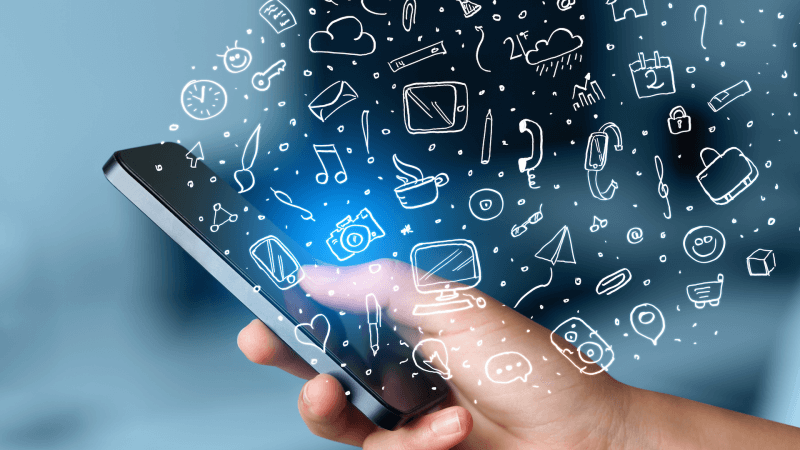How often do you find yourself mindlessly scrolling on social media? An issue that I have seen with far too many students is constant media consumption without meaningful intention. After much time observing these behaviors, it started to bother me, so I attempted to impact others by educating them on how to spend their downtime consciously. In March, I gave a lecture to the 9th and 10th graders about how these harmful behaviors rewire the human brain. The presentation yielded a discussion about dopamine releases, instant gratification, algorithms, over-stimulation, addiction, attention spans, and negative feedback loops.
Dopamine is more of a reward chemical than a pleasure chemical. Dopamine gets released whether someone is partaking in either healthy or unhealthy activities. Social media is a very cheap and easy way to get that release. The gratification that a click of a screen can achieve is instant. Apps like TikTok, based around a “for you page”, are conditioned precisely to the users’ interests, so their tolerance to such a high level of stimulation builds up fast. Addiction develops and soon enough the brain’s default state (its homeostasis) will also adapt. Eventually, this creates a subconscious urge to open an app and scroll with no set goal. The reason that this specific addiction is so common is because the brain is always looking for the end of something (think about why songs get stuck in our heads) but the pattern of endless videos creates a conflict. When there is a drive to constantly be artificially stimulated by something external, the addict won’t be able to focus on basic tasks, like paying attention in class, since the brain is in hunger for that stimulation. The best way that I can summarize modern social media addiction is to make a comparison to gambling. Just like a slot machine, you pull down the lever (scrolling with your finger), not knowing what the next video (your reward) will display. Uncertainty is the driving force of the desire to “see what’s coming next”.
Humans were never meant to have this level of stimulation. If someone wanted a sense of reward, they would have to work hard for it, unlike how it’s now achievable on demand in any setting. A common example that anyone can relate to is food. Instead of grocery shopping and preparing a healthy meal, we can have almost any food establishment deliver to our front door with a click of a button. The appreciation for standard-level pleasure becomes heavily shortened when the brain seeks something much more, causing the quality of day-to-day life to decline. If mindfulness isn’t practiced to reflect on what content you consume, there will be a higher ratio of unprocessed information than processed information. Ultimately, this develops anxiety and the feeling of being overwhelmed.
In my journey to ending my social media addiction, I had to eliminate the necessary disruptive behaviors and be more conscious of my media consumption. Instead of pulling my phone out during break when my brain craved it, I replaced that excitement with reading under the sun. To avoid that urge in the first place, I leave my phone in my locker in the morning and use short intervals throughout the day to complete necessary tasks that require it. To help decrease my time spent on my phone, I discovered One Sec, which is a shortcut application that allows you to have a moment to pause before you open any app and consider if you still want to open it. For anyone wanting to learn more, I recommend Stolen Focus by Johann Hari, which discusses how developers purposefully captured our attention for their corporate benefits and the consequences of their actions.
For the last part of my research, I sent out an anonymous survey to the majority of the student body, examining various statistics. The 9th grade gave the most responses, and 12th grade gave the least. The average time spent on social media daily was roughly 2.5 hours. The average time spent on social media in a day at school was approximately 50 minutes. Snapchat, Instagram, and TikTok are the 3 most used apps, respectively. These are alarming statistics because free time should be spent doing something productive, especially during school hours, which is the opportune time to engage in social interaction.
My research aims to portray the reality of excessive social media usage in a harm-reduction manner, not to demonize social media as a whole. The message I am sending is not to delete all of your apps but to use them safely and controlled. I have had more benefits than disadvantages as a result of social media use. What I hope my peers took away from my presentation is to be more mindful every time they pick up their phones. Together, we can develop healthier habits and regain control over our relationship with social media.




